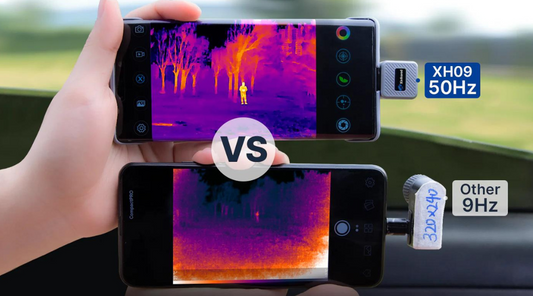Smart Strategies Balancing Battery Health Utilizing Thermal Imaging Detection
In our fast-paced digital age, our reliance on battery-powered devices has never been greater. From smartphones to laptops, electric vehicles to wearable gadgets, batteries are the unsung heroes that keep us connected and powered up. However, ensuring the longevity and optimal performance of these batteries can be a challenge.
Maintaining the health of your device's battery is crucial for prolonged usage and sustained performance. In this quest for longevity, thermal imaging detection emerges as a groundbreaking technology. By leveraging the power of thermal imaging, we can implement smart strategies that go beyond conventional battery management systems.

Understanding Battery Health
Before delving into thermal imaging, let's grasp the key factors influencing battery degradation. Temperature variations, charging cycles, and usage patterns play pivotal roles in determining a battery's lifespan. Poor battery health not only affects device performance but also shortens the overall lifespan of the battery, prompting the need for proactive battery management.

Thermal Imaging Detection Technology
So, how does thermal imaging come into play? Thermal imaging technology allows us to visualize and monitor temperature variations in real time. Applied to battery health management, it becomes a powerful tool to identify potential issues before they escalate. The benefits are two-fold: enhancing device performance and prolonging battery life.

Smart Strategies for Balancing Battery Health
-
Real-time Monitoring with Thermal Imaging
- Implementing continuous monitoring of battery temperature.
- Instant detection of overheating issues for prompt intervention.
-
Temperature Control Mechanisms
- Integrate temperature control mechanisms based on thermal data.
- Prevent excessive heat buildup during charging and usage.
-
Adaptive Charging Based on Thermal Data
- Tailor charging patterns based on real-time thermal feedback.
- Optimize charging cycles to minimize stress on the battery.
-
User-friendly Interfaces
- Develop intuitive interfaces for users to monitor battery health.
- Provide actionable insights for users to make informed decisions.

Best Practices for Thermal Imaging Implementation
To make the most of thermal imaging for battery health, it's essential to follow some best practices:
-
Proper Calibration
- Ensure accurate readings by calibrating thermal imaging devices regularly.
-
Integration with Existing Systems
- Seamlessly integrate thermal imaging with current battery management systems.
-
Continuous Monitoring and Analysis
- Establish a routine for continuous monitoring and analysis of thermal data.

As we embrace the era of smart devices, taking proactive measures for balancing battery health is paramount. Utilizing thermal imaging detection and implementing smart strategies not only enhances device performance but also contributes to a sustainable and eco-friendly approach to technology.
Let's stay ahead of the curve and adopt these smart strategies to ensure our devices stay charged and ready when we need them most.




